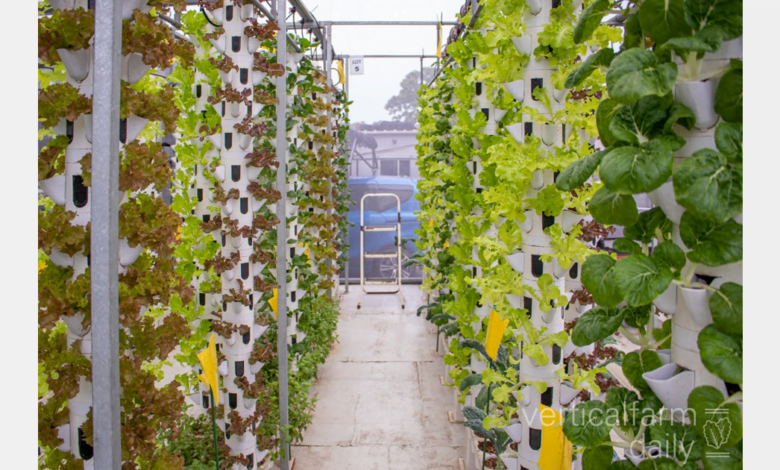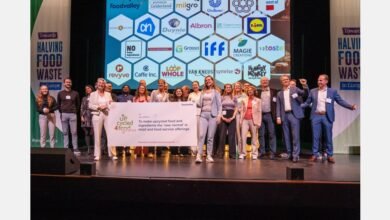Vertical farming for food security in the Far East

Food security is a particularly sensitive and serious issue for the Far East. Harsh climatic conditions, including cold winters and a short growing season, combined with large areas of land unsuitable for agriculture, have posed challenges for the region for centuries.
Sociologists note that a third of the Far East’s residents face problems with proper nutrition. The region’s remoteness from Russia’s main logistics centers increases the final price of fresh food products, making many of them inaccessible to a large part of the population.
According to regional studies, food consumption in the Far East falls below the standards recommended by the Ministry of Health. This is especially true for vegetables, with consumption levels 28% below the norm as of 2021.
This article examines the current situation regarding food security and self-sufficiency in the Far East and discusses the prospects of vertical farming as a method to grow fresh and affordable products in the regions of the Far Eastern Federal District (FEFD).
Food Self-Sufficiency in the Far East
The level of self-sufficiency in agricultural products in the Far Eastern Federal District varies by region.
The Kamchatka Territory, Chukotka Autonomous Okrug, and Magadan Region are the most vulnerable in terms of food security. These areas have minimal self-sufficiency rates, such as 5.3% for potatoes in Chukotka and 2.7% for meat in the Magadan Region.
Conversely, Primorsky Krai and the Amur Region are in more favorable conditions. Both regions meet thresholds for grain and potato production and are experiencing high GDP growth compared to their neighbors, partly due to positive dynamics in grain production from 2012 to 2021.
Fish is the main export product of the Far Eastern Federal District, and soybeans are the main agricultural crop. In 2021, soybean production volumes amounted to 1,749.5 thousand tons.
Despite positive dynamics in certain sectors of agriculture and regions of the Far Eastern Federal District, the region as a whole remains critically dependent on external supplies, particularly vegetables.
Even in the relatively prosperous regions, the area of agricultural land for growing potatoes and vegetables is very small. For example, in 2021 in the Amur Region, the area under vegetables and potatoes was 210 hectares, less than 1% of the total sown area.
Most agricultural and industrial products are transported to the Far East from western Russia and other countries. The main foreign suppliers of vegetables and fruits are China and Kazakhstan.
Vertical Farming: Fresh and Affordable Vegetables in the Far East Year-Round
The extremely difficult food security situation in the Far Eastern Federal District is driving the industry to find innovative solutions for growing fresh and affordable products.
Panvita, a company specializing in vertical farming, opened a high-tech indoor vertical farm for growing vegetables using iFarm technologies in Kamchatka in the fall of 2022. The vertical farm is located in the garden hypermarket “Dachnik” in Petropavlovsk-Kamchatsky, where visitors can observe the growing process through stained glass walls.
On a planting area of 90 m², Panvita grows more than 700 cucumber plants and experiments with varieties of pepper and tomato. The seedling department has a capacity of 800 plants.
Vegetables are grown using a single-tier trellis system, low-volume hydroponics, and a drip irrigation system. Mineral wool, a sterile substrate that requires no pre-sowing preparation and conserves water and fertilizers, is used. This method is both environmentally friendly and economically beneficial.
The farm produces 50 kg of fresh vegetables per day, supplying one and a half tons of fresh produce to local supermarkets each month. The low transportation costs from farm to consumer positively affect production costs, allowing city residents to buy fresh and healthy vegetables at lower prices than imported counterparts.
The first year and a half of operation of the cucumber farm, called “12 Months,” showed excellent results. Panvita plans to recoup the investment in the project within two years.
iFarm Veggies Technology for Vegetable Vertical Farms
In addition to its primary purpose, the “12 Months” farm in Petropavlovsk-Kamchatsky serves as a laboratory for experiments with light, nutrition, climatic conditions, and vegetable varieties.
Year-round cultivation of vegetables in the Far North and Far East is made possible by iFarm Veggies technology, developed to strengthen food security in remote and climatically challenging regions of Russia. Vertical farms using this technology grow short and medium-fruited smooth cucumbers, medium-fruited tomatoes, and cherry tomatoes using highly efficient hydroponic and aeroponic methods. This technology eliminates the use of synthetic pesticides.
In the summer of 2023, iFarm agronomists developed the first technological maps for growing radishes on vertical farms. At a laboratory farm in Berdsk in the Novosibirsk Region, the team tested radish varieties, temperature, and climate conditions, and developed a nutrient solution recipe. Unlike tomatoes and cucumbers, radishes are grown on multi-tiered racks.
The City Greenhouses company, the official distributor of iFarm technologies, plans to launch several more farm laboratories to test and implement vegetable growing technologies in the Far East and Far North regions, where food security is at risk.
Source: gorteplitsy.ru
Source link




